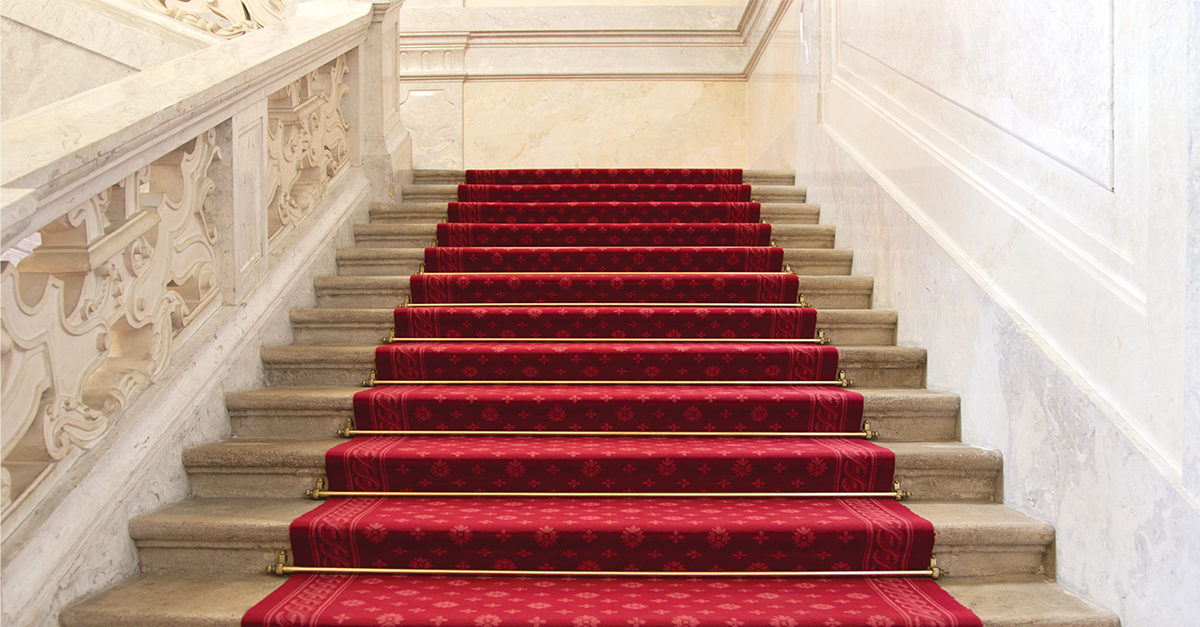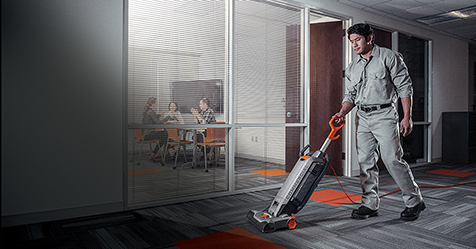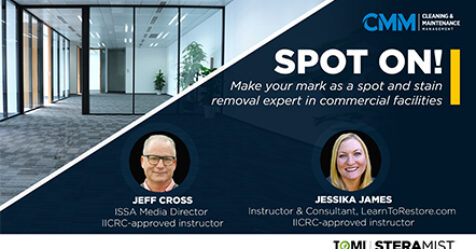Have you ever had this experience? You are on a large commercial office carpet cleaning job; the carpet is a light grey color, short cut pile, and about two years old. This is the first time your company has been hired to clean the carpet; to restore the color and appearance; and to remove the soils, oils, and debris that have accumulated.
You specify the best approach is to pile lift the carpet using counter rotating brushes to remove loose soils and debris, followed by hot-water extraction to get the deepest clean possible. You arrive with your crew and proceed to pile lift the carpet. In this case, they pile lift about 6,000 square feet of open area. You start to pack up the pile lifting equipment, and the client, who happens to be in the building during the cleaning process, walks into the area and proclaims that the carpet looks great! What a great job you have done. You smile and say one of the following:
- Option 1: “Thank you. It does look great,” and pack up to leave; or
- Option 2: “Thanks. Now we are going to deep clean the carpet and remove the remaining soils and oils. You won’t believe how great it is going to look when we have completed the full service.”
Interesting observation here about client expectations and what is clean. Does it come down to light reflection on fibers?
The Illusion of Clean
In this scenario, using the pile-lifting process alone lifted up the carpet’s yarn and restored the carpet’s ability to reflect light from all sides of the fibers. Magically the carpet looked better after going through the pile-lifting process. Why? Because when the yarns are laying on their side, light only reflects from one side of the fibers, and the carpet color looks defused, darker, and appears to be dirty. By lifting the carpet yarns back up, light can now flow through all sides of the thermoplastic and reflect bright, brilliant colors that were originally selected for the carpet product.
Most carpet fibers are made from thermoplastics—nylon, olefin, polyester, etc. The fibers have memory built in during the manufacturing process and heat setting. Most have resiliency (memory) to stand up after being crushed down, especially nylon fibers. Pile lifting and hot water extraction helps restore the resiliency in the fibers.
So the question remains: What is your definition of clean? Is your definition the same as your clients’? Who can actually tell the difference between clean and the illusion of clean? There is a big difference between the appearance of the carpet and the use life of carpet.
In Michael Berry’s article that was published in The Journal of Cleaning, Restoration and Inspection, “Science, Cleaning and Built Environments,” he states, “Clean is far too often thought to be subjective. A pleasing appearance alone, which is fundamentally an artifact of light reflection, often remains the dominant hallmark of the clean condition.”
Measuring Clean with Science
In 2011 the Carpet and Rug Institute (CRI) introduced new technology to the carpet industry that actually was rocket science. It is called X-Ray Fluorescence (XRF). The XRF instrument emits energy and excites the atoms of the target elements found in the simulated carpet soils. The energy generated in response is called X-Ray Fluorescence, which the device can detect and measure. Each atomic element has its own unique energy signature. The XRF instrument measures each energy signature to determine the presence and concentration of various soil elements.
The original XRF technology (TRACeR III-V) was developed by NASA in 2002 to conduct quality control for critical aluminum alloy parts destined for the space shuttle. Evaluation of these parts is critical for the Space Agency, as any signs of contamination, corrosion, or material deviation could compromise a space mission. Shaped like a portable drill and weighing less than 5 pounds, the TRACeR III-V has proven successful in chemical substance identification and analysis.
The technology set the stage for a major breakthrough in carpet cleaning validation, helping to create stricter standards for today’s vacuum cleaners, carpet extractors, and other carpet cleaning products to ensure that they are removing soil.
A peer-reviewed research paper validating the CRI’s XRF carpet cleaning test protocol was published in the March/April 2011 edition of AATCC Review, the official journal of the American Association of Textile Chemists and Colorists (AATCC). Titled, “X-Ray Fluorescence Spectroscopy Method Development for Quantitative Evaluation of Carpet Cleaning Technology,” the paper was authored by G.H. Asbury of Professional Testing Laboratory, Inc. and R.F. Shannon of KeyMaster Technologies, Inc. The seven-page report examines the processes used to test and verify the removal of soil from carpet using X-ray fluoroscopy equipment. It concludes that XRF measurement is a reliable means of quantifying the amount of test material removed from carpet during cleaning.
The XRF protocol remains the only valid technology of measuring soil removal, and CRI has set up a certification project for approving vacuum cleaners, cleaning products, and carpet cleaning equipment using this technology.
But even with all of this testing available, it comes down to setting up a good, solid maintenance program and using well-trained technicians. A well-designed commercial carpet cleaning maintenance program can extend the life of the carpet investment. The design of the maintenance program will help achieve the goals of reaching an acceptable appearance level, maintaining the colors, and contribute to a healthier environment. The program should include soil prevention strategies, routine maintenance, interim cleaning, and restorative cleaning.
The Solution to Clean: Ongoing Maintenance
In the past, carpet was cleaned only when the appearance was unacceptable or poor. Planned carpet maintenance programs should stop the cycle of allowing color loss from high levels of soils, oils, and debris that can cause fiber damage from scratches and abrasion. The combination and implementation of soil prevention, routine maintenance, interim, and restorative cleaning on a yearly basis will make the difference and help define what is clean.
The objective of a carefully built maintenance program is to effectively remove unwanted matter from the carpet and properly dispose of it. Carpets act as a filter for the indoor environment. The planned carpet maintenance program works to empty the filter and enhance the cleanliness of the indoor environment while maintaining the appearance of the carpet’s color.
Can your customers tell the difference between clean and soiled carpet? More than likely, they cannot. It is our job as professionals to assist in this process.




